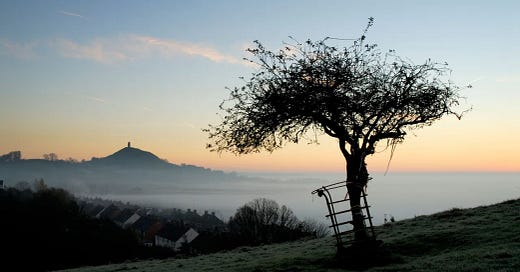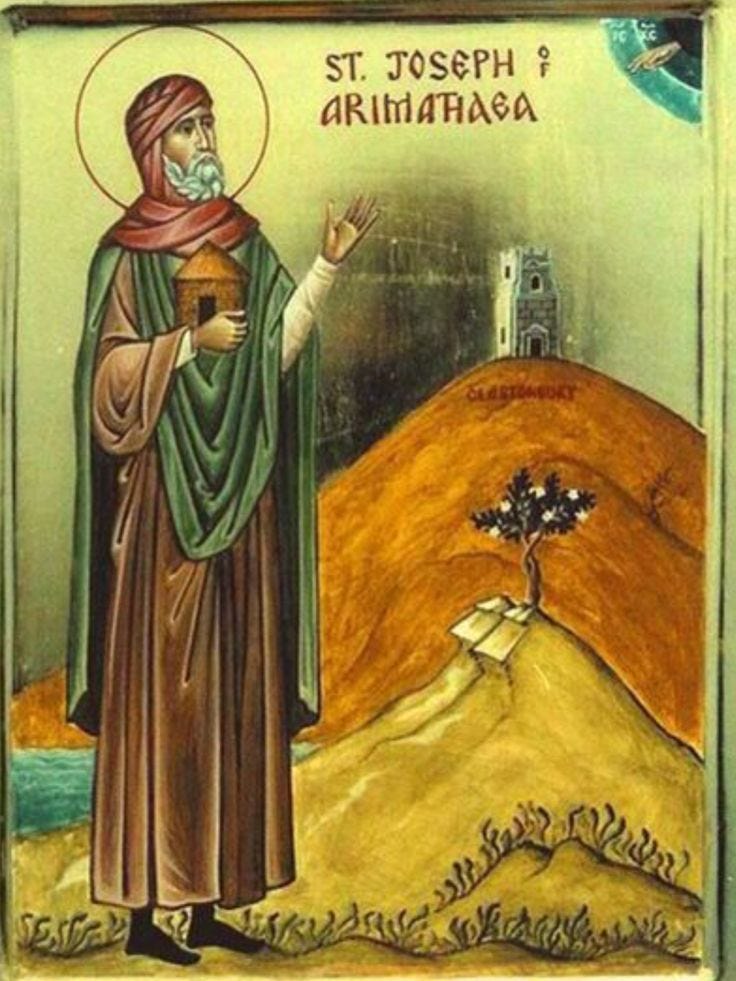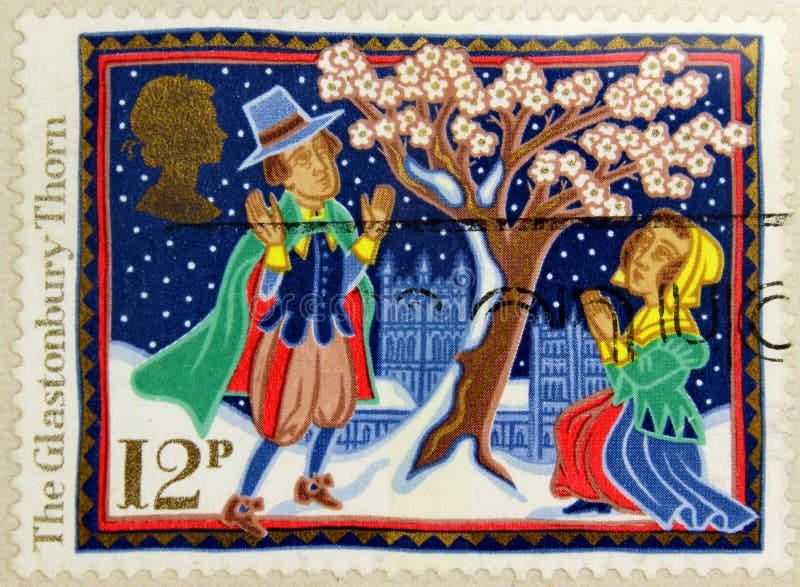There grew, within a favour'd vale, As old traditions tell the tale, A famous, flowering, Eastern thorn, Which blossom'd every Christmas morn. - George Meredith
We live in a dis-enchanted world. Everything has been mapped, the monsters on the margins are all slayed or relegated to folklore, and sites once considered sacred are tourist attractions. It can be easy to come to the conclusion that one place is just like another.
But I believe there are still truly spiritual and powerful places, in more than a symbolic sense.
Places where the veil seems thinner, where the connection to myth and legend is stronger. Where the stifling, decayed spirit of our age is less potent.
Glastonbury is one of those places.
Glastonbury has been called the holiest ground in England for centuries for many reasons. One of them is a certain Thorn tree, one that is totally unique.
These thorn trees, Glastonbury Thorns, are the only hawthorn trees in the world that bloom in Winter as well as in Spring. There are few of them left.
But these aren’t just a unique species of tree. These are Holy Thorns- a living link to past ages, and to Christ himself.
Legends tells us that the first Glastonbury Thorn was planted by Joseph of Arimathea, when he came to Glastonbury as a missionary, bearing the Holy Grail and vials of Christ’s sweat and blood. It is believed that the Red and White Springs of Glastonbury where create by St. Joseph when he planted these vials, and/or the grail within Glastonbury Tor. St. Joseph is also said to have founded the original church in Glastonbury with his followers, on the site where now lay the ruins of Glastonbury Abbey.
It is said that when he planted his staff into the ground of Wearyall Hill, it miraculously sprouted into the first Holy Thorn tree. More trees were created by grafting from the original. These Holy Thorns blossom not only in May, but also on Christmas Day in celebration of Christ’s birth. All attempts to grow new Glastonbury Thorns from seeds or direct cuttings have failed since the 19th century, resulting in regular hawthorn trees that bloom only in Spring.
The original Holy Thorn on Wearyall Hill was destroyed by Puritans during the English Civil War, but its descendants live on in the grounds of various sacred sites in Glastonbury, including the Abbey and St. John’s church. Its descendant on Wearyall Hill was periodically vandalized until being removed in 2019. Blossoms from these trees are still sent to the Royal Family during Christmastime.
As an interesting aside- in 1753, when Britain adopted the Gregorian calendar, the Glastonbury Thorns bloomed on January 5th- the old Christmas Day. Apparently, Holy Thorns have theological opinions.
You may not believe the story- but no scientist can tell you why these Holy Thorns celebrate Christ’s birth and resurrection, in defiance of what a hawthorn tree “should” do. You could call it coincidence and forget about it, if that’s easier for you. But could it really be coincidence?
I saw these trees, I touched them with my hands. In that moment, something from the realm of “legend” was made real and tangible for me. Or I should rather say, my eyes were opened to something that had existed for two thousand years whether we collectively still believed in it or not.
We need these reminders that distant history and legend are not intangible things that exist only in our minds. The veil is thinner than we believe. The deeds of history did not play out on some alien world, but on the very soil that we still walk on. The men we know from stories breathed the same air we do, drank the same water, are buried in the same Earth.
I think that in our day it’s hard for even very devout Christians to really believe in the same way that a 1st century Christian did. We may believe, but do we really have faith?
I do believe in the things I write about, truly. But I often wonder how small my faith must be compared to someone in the early Church. Those people lived in a world that was not yet dis-enchanted, where the spiritual world was a living, breathing part of day-to-day life. Would a Holy Thorn tree really have seemed so out-of-the-ordinary to them?
So, you can choose whether or not to believe the legend of the Holy Thorns. But in your decision, keep in mind that only in the modern era did anyone doubt it. Only in the modern era have those that claim to have faith felt embarrassment for believing in anything “supernatural”. Only today is our faith so small that we would doubt the Earth would celebrate the birth of its creator.
The great stories are still playing out- and you live within them.







Excellent piece old chap !
The low spiritual signal to noise ratio in 21st century society often makes it difficult to find visceral life affirming experiences that feed the soul.
I have found Argyll in Scotland to be a wonderful place to connect with the feelings that our ancient ancestors were probably very familiar with.
Lots of ancient stone circles , cairns , ruined castles etc that date back to around 3000BC .
We tend to drive up there between October and March and wild camp where we can if conditions allow.
Sleeping in a silent landscape under a star packed sky with ancient 5000 year old burial sites nearby makes one realise just how insignificant we are but also how blessed we are to be part of this thing called Life on a tiny blip of rock in this vast Universe.
It is impossible not to feel the eternal power of God in these experiences.
Aside from Stonehenge, the most moving recollection of my time in England was at Glastonbury. Planning to return and hoping to have an even greater experience.